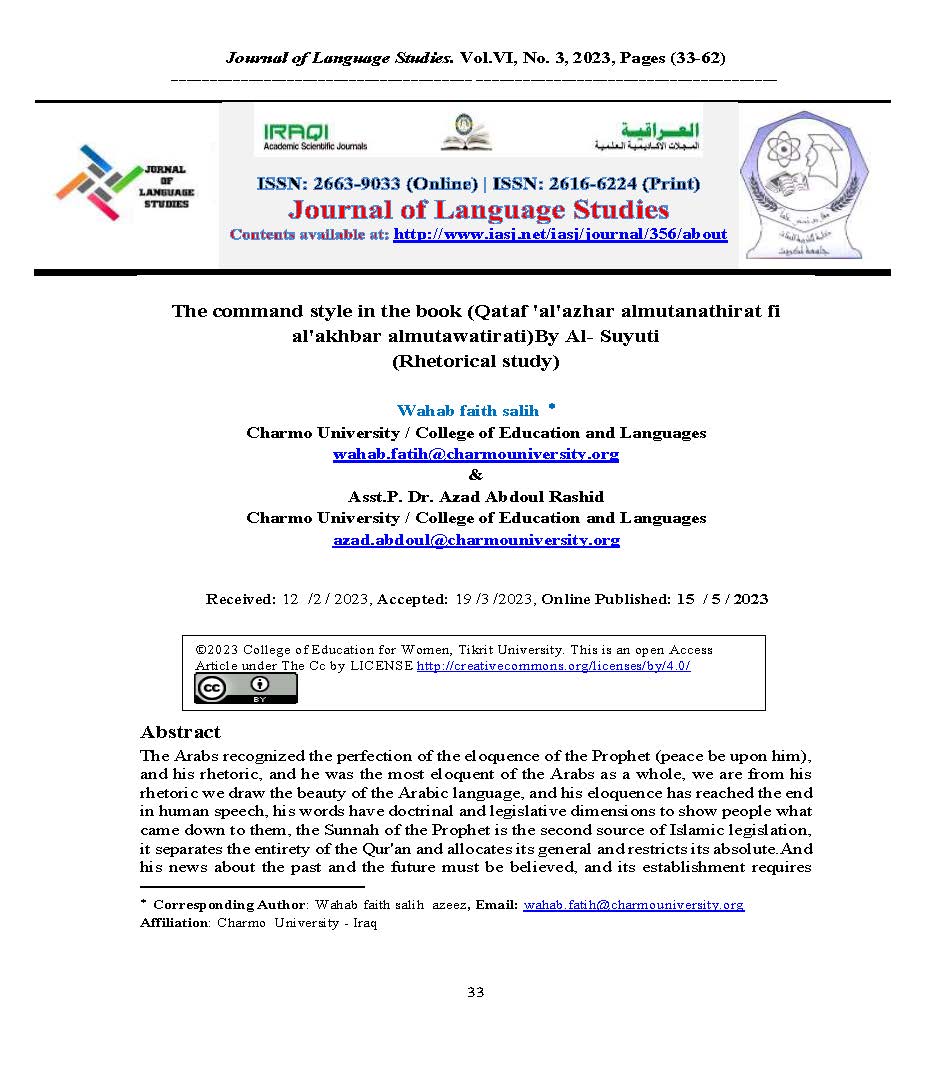The command style in the book (Qataf 'al'azhar almutanathirat fi al'akhbar almutawatirati)By Al- Suyuti (Rhetorical study)
DOI:
https://doi.org/10.25130/jls.6.3.2.15Keywords:
the eloquence of the Prophet (Peace be upon him), the Order creation, the command, the frequent hadith, Al-Suyuti, figurative meanings, the obligatory command, the command to recommend and recommendAbstract
The Arabs recognized the perfection of the eloquence of the Prophet (peace be upon him), and his rhetoric, and he was the most eloquent of the Arabs as a whole, we are from his rhetoric we draw the beauty of the Arabic language, and his eloquence has reached the end in human speech, his words have doctrinal and legislative dimensions to show people what came down to them, the Sunnah of the Prophet is the second source of Islamic legislation, it separates the entirety of the Qur'an and allocates its general and restricts its absolute.And his news about the past and the future must be believed, and its establishment requires compliance with its orders and prohibitions, whether in worship or transactions, our modest research entitled: The style of the command in the book (qataf al'azhar almutanathirat fi al'akhbar almutawatira) by Al-Suyuti - rhetorical study - consists of an introduction and preface in which we mentioned the eloquence of the Prophet (peace be upon him) and clarify the vocabulary of the title, which is a brief about the life of Al-Suyuti and explain some terms, And the method of construction order and others, especially the matter in the construction of the order and the order of the first methods discussed by grammarians and rhetoricians, and pointed to the true meaning and to some of the purposes that come out to it, and the research consists of two sections in the first section we mentioned the hadiths in which the matter of the obligation and in the second section, which is entitled hadiths in which the matter of scarring and desirability and then comes the conclusion and sources and references.

